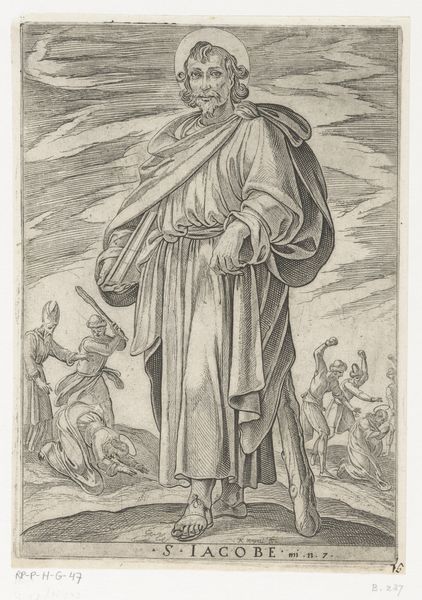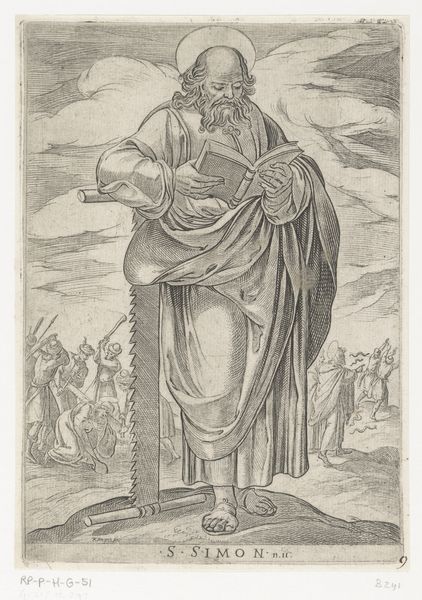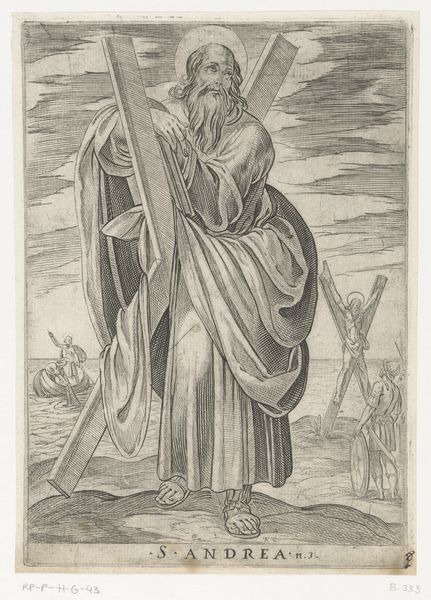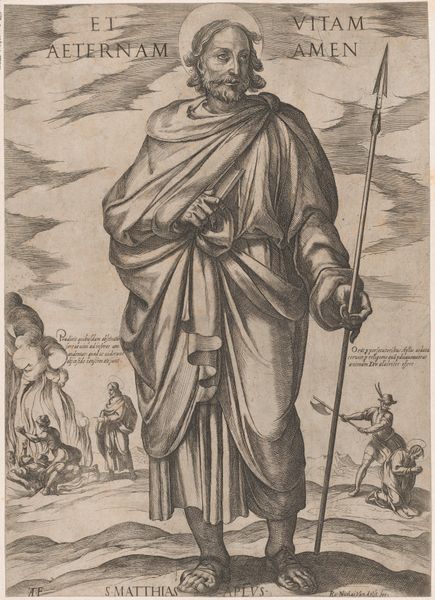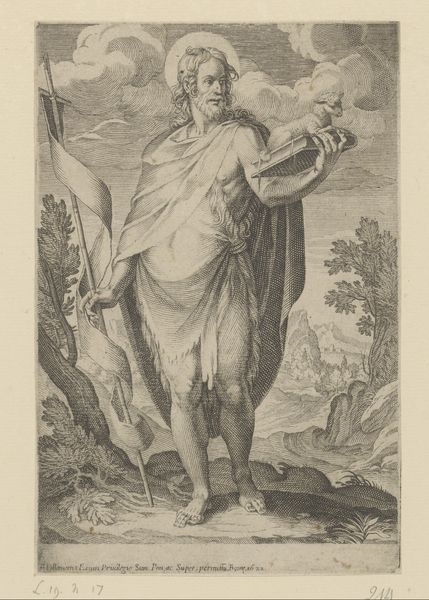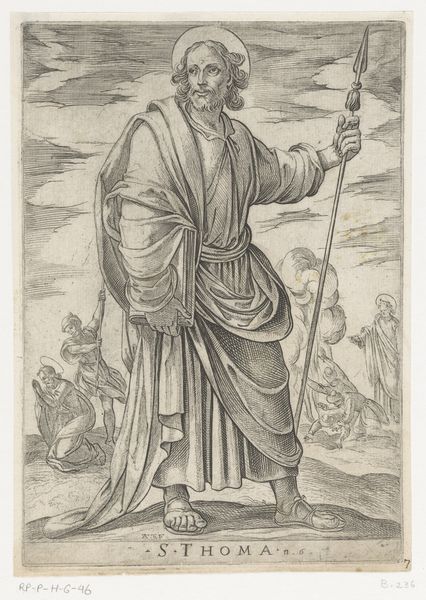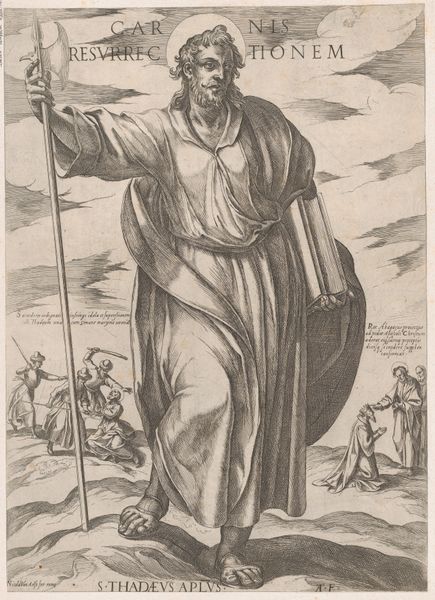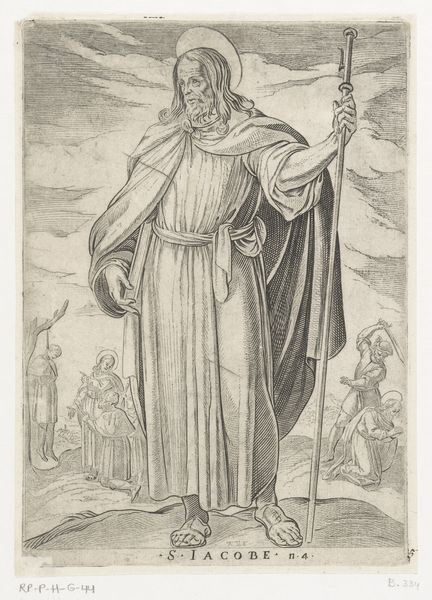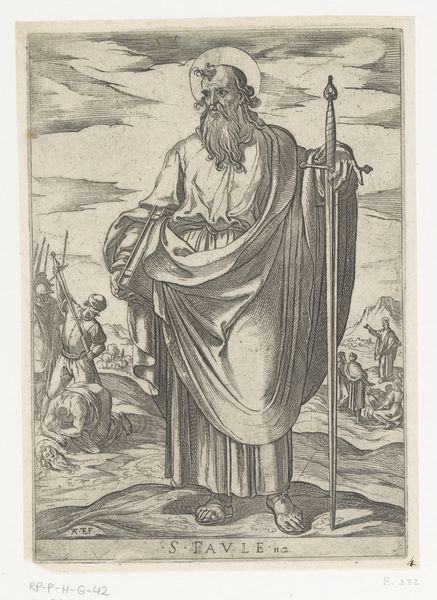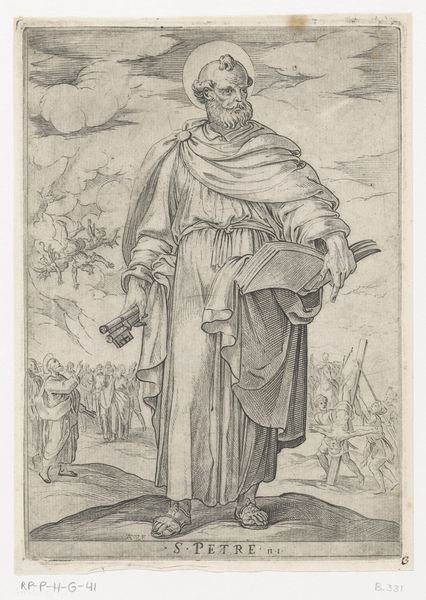
print, engraving
#
portrait
#
baroque
# print
#
old engraving style
#
figuration
#
cross
#
line
#
history-painting
#
engraving
Dimensions: height 202 mm, width 143 mm
Copyright: Rijks Museum: Open Domain
Antonio Tempesta created this print of Saint Philip sometime in the late 16th or early 17th century. Here, the apostle is shown with his traditional attributes: a cross, a book, and a halo, all visual cues which would have been very familiar to contemporary audiences. Tempesta was working in Italy at a time when the Catholic Church was still reeling from the rise of Protestantism. In the wake of the Reformation, the Church turned to art as a tool for reaffirming its authority. Prints like this one, which were relatively inexpensive to produce, were a perfect way to get the message out. We can see an active attempt to depict Catholic values and traditions being upheld, while other figures around the Saint are iconoclasts, destroying a statue. The historian's role is to look at the context in which images are made and consumed. By studying the history of the Church, the history of printmaking, and the visual conventions of the time, we can better understand what this image meant to its original audience.
Comments
No comments
Be the first to comment and join the conversation on the ultimate creative platform.
